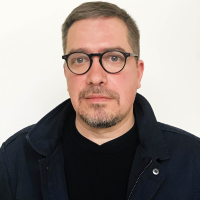
A blog of the Kennan Institute
BY MAXIM TRUDOLYUBOV
Russian voters have until July 1 to accept or reject an extensive package of amendments to the country’s constitution. The changes would affect approximately 60 percent of Russia’s principal law. Yet, it is one amendment that is seen as the real reason for the entire affair.
Initiated by President Vladimir Putin, that crucial amendment would allow him to run for president two more times despite a constitutional provision that limits the number of presidential terms to two. By the next presidential election, Putin will have served two four-year terms between 2000 and 2008 and two six-year terms between 2012 and 2024. If the amendments are approved, Putin will be able to remain in power until 2036.
The voting campaign does not seem to have conformed to the highest electoral standards (the independent election monitoring organization Golos, or Voice, described the vote as the “most manipulative” in the country’s history), but it is the subject of the vote that is of utmost importance. As the Kremlin has already exhausted other legal paths to extending the incumbent’s term, it now purports to discard the time Putin has already served.
In 2008, Putin stepped down in favor of a chosen successor, Dmitry Medvedev, in order to avoid breaking the constitutional ban on serving more than two consecutive terms in office. In the same year, 2008, the Kremlin lengthened the presidential terms from four to six years by enacting a constitutional amendment. Between 2008 and 2012, Putin was Russia’s prime minister. President Medvedev did distinguish himself from Putin in a number of initiatives, notably in foreign policy. He even generated some expectations among elites that he might run for a second term. Still, there are strong reasons to believe that Prime Minister Putin retained the de facto control of the regime.
Lengthening presidential terms, using temporary placeholders, and resetting the tally of the terms to zero are the kinds of devices politicians have used for decades to prolong their grip on power beyond constitutional limits. “Altogether, during the period 1945–2017, ninety-four presidents from across the world, whether in democratic or non-democratic regimes, increased the time of their presidential terms in one way or the other,” the political scientist Alexander Baturo contends in The Politics of Presidential Term Limits (Oxford University Press, 2019), a collection of studies he coedited with Robert Elgie.
Since 2017, notable cases of term-limit removal or extension include that of China’s Xi Jinping, who in 2018 got rid of the two-term limit on his country’s presidency, effectively signaling he could remain in power for life; and that of Egypt’s Abdel Fattah el-Sisi who initiated and enacted constitutional changes allowing him to remain in power until 2030.
Political scientists have used the term continuismo to describe the practice of seeking to overturn or extend presidential term limits. As early as 1940, the political scientist Russell Fitzgibbon defined continuismo as “the practice of continuing administration in power in a Latin American country by the process of a constitutional amendment, or a provision in a new constitution, exempting the president in office . . . from the historic and frequent prohibition against two consecutive terms in office.” Today’s students of the practice still use this definition, except they omit the reference to Latin America and the specific number of terms in office. Today, many of these “extenders” live in countries that once constituted the Soviet Union. During the past 30 years, many political leaders of the region have resorted to extending their terms beyond their original post-Soviet constitutional mandates. Among them are former or current presidents of Azerbaijan, Belarus, Kazakhstan, Kyrgyzstan, Russia, Tajikistan, Turkmenistan, and Uzbekistan.
The crucial question is: does continuismo pay? It does if one measures the practice’s success by the number of years served by those who resort to it. According to Alexander Baturo, among all presidents between 1960 and 2010, the average time spent in office for those politicians who entered the presidency in a democracy was 4.8 years. For those who entered the presidency in a nondemocracy, it was 7.2 years.
But it is how the “extenders” leave office, not how long they serve, that would make sense to add to the equation. In fact, an extension of a term may well lead to an early ouster from office. Baturo thus distinguishes between “democratic” and “nondemocratic” extenders. His argument is that continuismo is a matter of degree. Adding one additional term and leaving afterward may not indicate a critical democratic backsliding; by contrast, changing the constitution and getting rid of term limits or resorting to an emergency would most certainly make a regime critically less democratic. Baturo separates extenders into two categories depending on their democratic scores for the year of change. Those with a Polity2 score (a score political scientists assign to regimes based on a widely-used Polity IV database) above +5 he categorizes as “democratic,” while those below that threshold he sees as “nondemocratic.”
From this perspective, of the more than 90 cases of continuismo studied, 27 ended in an early ouster from office for nondemocratic extenders, 12 nondemocrats died in office (in natural or otherwise nonviolent deaths), 9 had to step down, and 9 were assassinated or killed in office. Those kinds of bad exit situations were dramatically less common for “democratic” extenders.
It is regime stability that the initiators of the current term extension say they seek. “The president will make our political system more sustainable. The system does not need to depend on the person of a specific leader who is currently holding the post,” Andrey Klishas, a member of the upper chamber of the Russian parliament, the Federation Council, said recently.
Yet evidence does not support Klishas’s paradoxical claim. The longer a leader stays in power in break with the country’s original constitutional mandate, the more personalist the system becomes. With time served, the tension a personalist system creates among the elites becomes greater, not weaker. The situation may look calm on the surface, but its internal divisions may deepen and crack open in the future. In contrast to a limited government, an unrestricted government seems to strive to remain in place forever—but no constitutional amendments have enough magic in them to give any government eternal life.
The opinions expressed in this article are those solely of the author and do not reflect the views of the Kennan Institute.
Author

Editor-at-Large, Meduza

Kennan Institute
After more than 50 years as a vital part of the Wilson Center legacy, the Kennan Institute has become an independent think tank. You can find the current website for the Kennan Institute at kennaninstitute.org. Please look for future announcements about partnership activities between the Wilson Center and the Kennan Institute at Wilson Center Press Room. The Kennan Institute is the premier US center for advanced research on Eurasia and the oldest and largest regional program at the Woodrow Wilson International Center for Scholars. The Kennan Institute is committed to improving American understanding of Russia, Ukraine, Central Asia, the South Caucasus, and the surrounding region through research and exchange. Read more

Explore More in The Russia File
Browse The Russia File
Chechnya as a Model of Modern Russia

Russia’s Indigenous Communities and the War in Ukraine

Gas and Power in a Changing US–Russia Relationship

